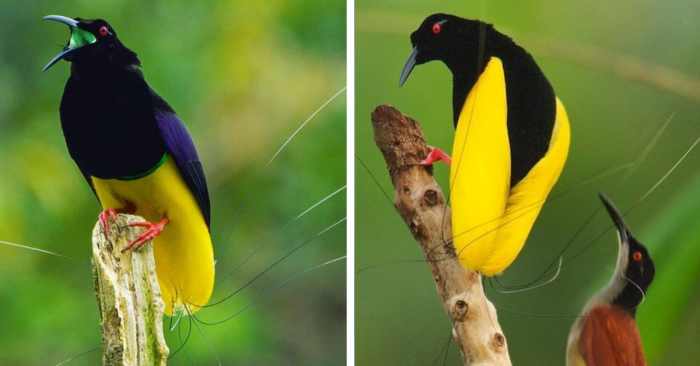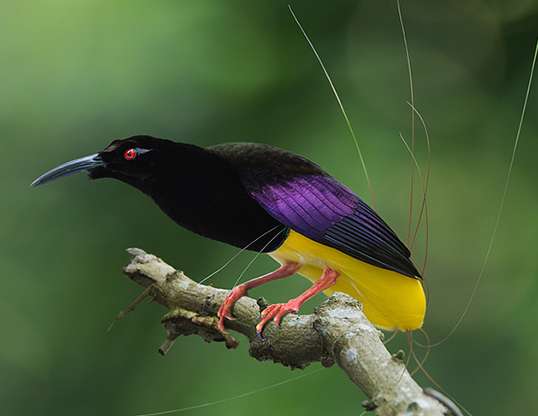Admire 42 beautiful images of the Twelve Birds of Paradise dancing gracefully and seductively in the wild
A bird who is covered in velvety black and an iridescent coppery olive-green, finished off with vibrant purple and yellow plumes on his flanks, from which sprout 12 wire-like filaments!

The twelve-wired bird-of-paradise (Seleucidis melanoleucus), is a medium-sized, approximately 33 cm (13 in) long, velvet black and yellow bird-of-paradise. The male’s chest, and head, are a deep velvet black, while his belly and flanks tappers off with rich yellow plumes. From these plumes emerge twelve blackish, wire-like filaments, which bend back near their base to sweep forward over this bird’s rear.

The female in comparison is mostly brown with black barring on her underparts.
The feet of both the male and the female are large-clawed, and pink in color.

These birds are endemic to the lowland rainforests of Papua New Guinea and its neighboring Island Salawait, Indonesia. The male is highly territorial, making sure he is at least 700 meters away from any other male in the immediate area.
The sole member of the monotypic Seleucidis genus, the twelve-wired bird of paradise prefers to inhabit the lowland forests and swampy areas of the islands it lives on.

Their main source of food is from fruit and arthropods, however, they will also take frogs and nectar when given the chance.
Having taken twelve years to fully develop his stunning plumage, the male twelve-wired bird of paradise puts it to good use during the breeding season by carrying out a dynamic courtship display which is performed on a leafless tree stump poking over nearby vegetation. There is little information on the rest of the breeding process.

This bird is evaluated as of Least Concern on the IUCN Red List of Threatened Species. A close watch needs to be kept on their population though, as these birds are not easy to breed in captivity.